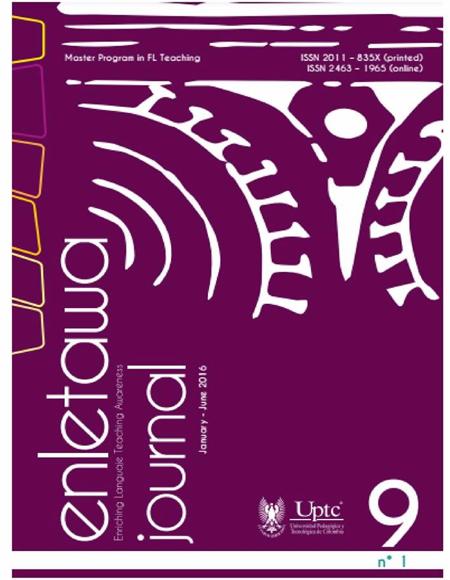Students’ Power Relationships within an EFL Classroom

Resumen
This paper reports the results of a research study whose main purpose was to identify aspects related to power relationships in a group of ninth-grade English learners. An EFL classroom was used as the setting to analyze power relationships among students. A qualitative case study was carried out in a public school from Sogamoso; the participants were 8 students, selected at random from a group of 35. The data was gathered through field notes, video recordings and focused interviews. After analyzing the data, it was found that aspects connected to power relationships sometimes either helped or hindered the participants’ English language learning process. Positive and negative features concerning power relationships within the EFL classroom were identified. Positive features include the use of power to motivate the accomplishment of tasks. Negative features include the use of power to suppress others thereby limiting their ability to express opinions in class.Palabras clave
Power, Power Relationships, Task Based Language Learning, Classroom Environment, English Language Learning Process
Citas
- Brown, D., and Rogerts, J. (2002). Doing Second Language Research. Oxford University Press.
- Brown, R., and Gilman, A. (1960). The Pronouns of power and Solidarity. In T.A. Sebeok (ed), Style in Language, MIT Press.
- Corbin, J., and Strauss, A. (1990). Grounded theory research: Procedures, canons and evaluative criteria. Zeitschrift für Soziologie, 19(6), 418-427. DOI: https://doi.org/10.1515/zfsoz-1990-0602
- Cummins, J. (2000). Language, power and pedagogy. Bilingual children in the crossfire. Clevedon: Multilingual matters. Cambrian printers Ltd. Great Britain. DOI: https://doi.org/10.21832/9781853596773
- Ellis, R. (2003). Task based language learning and teaching. New York: Oxford University Press.
- Foucault, M. (1977). Discipline and punish: The birth of the prison system. Harmondsworth, England: Penguin.
- Foucault, M. (1994). Power and Knowledge. Cambridge: Cambridge University press.
- French. J., and Raven, B. (1959). The bases for social power. In D. Cartwright (Ed.), Studies in social power. Ann Arbor. Michigan: University of Michigan Press.
- Johnson, D. (1979). Student-student interaction: The neglected variable in Education. University of Minnesota. Longman.
- Long, M. (1983). Native speaker/non-native speaker conversation and the negotiation of comprehensible input. Applied Linguistics, 4, 126-141. DOI: https://doi.org/10.1093/applin/4.2.126
- Maxwell, J. (2009). Teamwork 101: What Every Leader Needs to Know. Yates and Yates. United States of America.
- Ortega, H. (2005). Poder y Práctica Pedagógica. Cooperativa Editorial Magisterio. Colección Seminarium. Bogotá, Colombia.
- Ramos, B. (2004). Power Relation in the EFL class through oral interaction (Master's thesis). Universidad Distrital Francisco José de Caldas, Bogotá.
- Richmond, V., and McCroskey J. (1992). Power in the classroom: Communication, control and concern. Lawrwnce Erlbawn Associates, Inc.
- Rosemary, S. (2004). The power of language (chapter). Thoughts and actions. In The NEA higher education journal.
- Tannen, D. (1995). The power of talk: Who gets heard and why. Harvard Business Review, 73(5), 138-148.
- Toohey, K. (2001). Disputes in child L2 Learning. TESOL Quarterly, 35, 257-278. DOI: https://doi.org/10.2307/3587648
- Wilson, B. G. (1996). Constructivist learning environments: case studies in Instructional design. Englewood Cliffs NJ Educational Technology publications.
- Yin, R. K. (2009). Case Study in Contemporary Educational Research: Conceptualization and Critique. Cross - Cultural communication. 5 (4), 21-31.
Descargas
Los datos de descargas todavía no están disponibles.